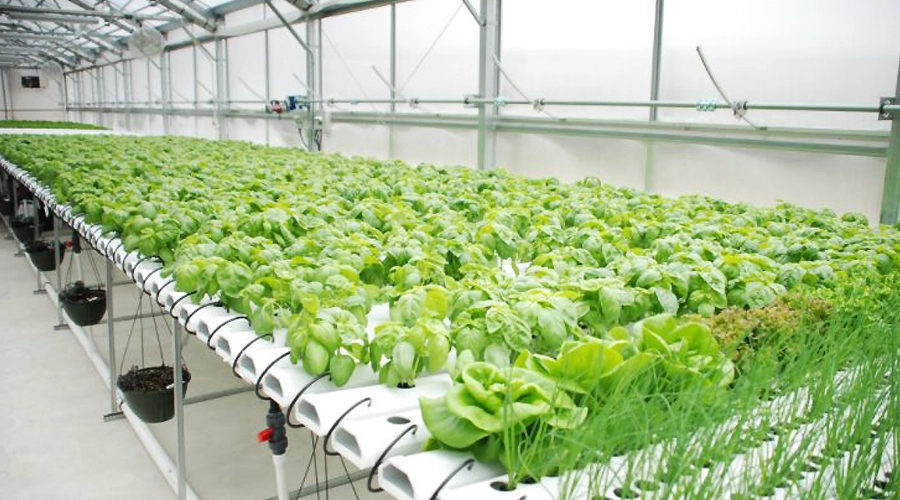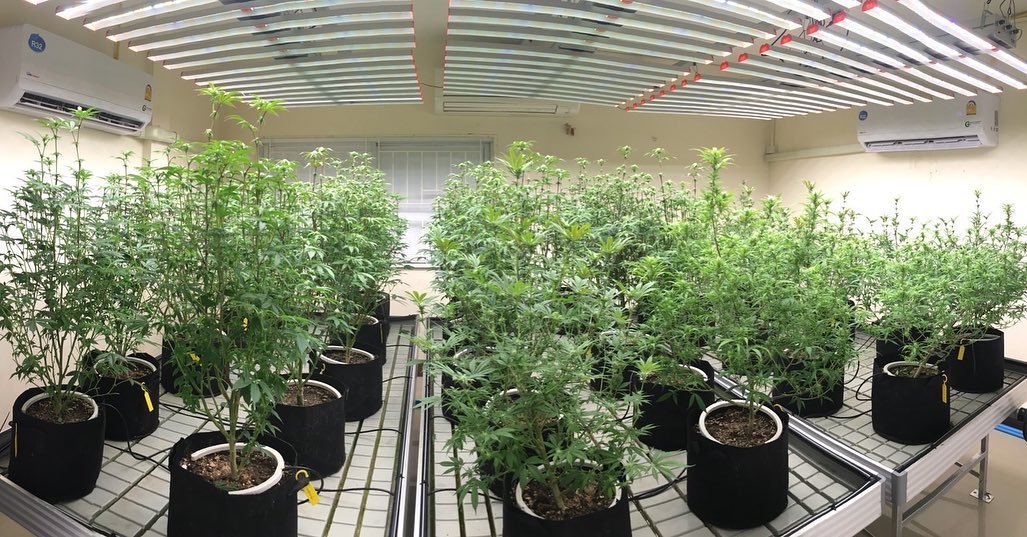Ya sea que los productores usen tecnología NFT, sistemas hidropónicos DWC o sistemas aeroponic, una vez que haya configurado su sistema hidropónico, debe cuidarlo bien.
El mantenimiento del sistema hidropónico puede parecer desalentador, pero no se preocupe: cuando tiene una buena comprensión de los fundamentos, todas las demás cosas se vuelven mucho más fáciles.
Aquí, exploraremos lo que requiere la agricultura hidropónica para el monitoreo para que pueda mantener el sistema limpio y el contenido de sus plantas.
Las cosas que necesitas para grabar
- nivel de pH
- Lecturas de la CE
- Cambios de agua
- Calidad del agua
- Iluminación y fotoperíodo
- Temperatura
- Niveles de oxígeno
- Adiciones de nutrientes
- Monitoreo de enfermedades y plagas
- Limpieza del sistema regular
Puede parecer mucho, pero es más fácil de lo que parece. Es mejor mantener un registro de cada tarea que realice mientras monitorea y mantiene su sistema hidropónico.
Monitorear el pH y la CE
Lo primero que debe discutir es el valor de pH y las lecturas de la CE.
Es importante monitorear la solución de nutrientes con frecuencia, especialmente cuando su sistema es nuevo, para garantizar el equilibrio correcto de los nutrientes esenciales para el crecimiento de las plantas. Monitoree los niveles de pH para mantener el rango óptimo para la absorción de nutrientes.
Mida la CE de la solución de nutrientes para determinar su concentración general de nutrientes y ajustar los niveles de CE en función de la etapa de crecimiento de la planta.
En Sistemas DWC, típicamente se usa una cantidad significativa de agua, y se compara con los sistemas NFT, factores como la temperatura del agua, los niveles de pH, la resistencia al fertilizante y la concentración general de nutrientes tienden a permanecer relativamente estables con el tiempo.
En DWC, estos parámetros no sufren cambios significativos por hora por hora. Puede haber variaciones sutiles diariamente y más cambios cada semana. No requiere un monitoreo frecuente para ajustes continuos o constantes como lo hacen los sistemas NFT.
Inicialmente, pruebe su solución de nutrientes al menos una o varias veces al día. A medida que su sistema madure, obtendrá un mejor sentido y puede reducir la frecuencia de prueba.
Al tomar medidas en los sistemas DWC, como ajustar los valores de la fuerza de fertilizantes semanales o de pH todos los días o cada dos o tres días, es una tarea más manejable en comparación con el monitoreo continuo requerido por los sistemas NFT.
A veces, el manejo de nutrientes en los sistemas NFT requiere un manejo diario de pH. El monitoreo es particularmente crucial en las primeras etapas de crecimiento, ya sea en la zona de aguas profundas o los sistemas NFT.
Los sistemas hidropónicos más pequeños necesitarán pruebas más frecuentes porque cualquier nutriente adicional o agua evaporada puede afectar sus valores de CE y PH de manera más notable.
Las plántulas necesitan un buen comienzo, ya que los productores nunca pueden recuperar ese crecimiento. Comenzar con plántulas de baja calidad significa que los productores nunca alcanzarán las plantas óptimas que apuntan a cosechar.
Agregar agua a su sistema
Al agregar agua al sistema, registre la fecha y la cantidad de agua agregada en el registro.
Debe saber que hay dos tipos de cambios de agua en el crecimiento hidropónico. El primer tipo es un cambio de agua parcial, seguido de un mayor cambio de agua, y estos cambios son mucho menos frecuentes.
A medida que sus plantas absorben la solución de nutrientes, notará una ligera disminución en el nivel del agua en el depósito. Además, un poco de agua se evaporará de la solución nutritiva, contribuyendo a la disminución del nivel de agua. Es por eso que verificar su depósito diariamente es crucial.
La tasa a la que disminuye el nivel del agua varía según el tamaño del sistema, la temperatura ambiental y la humedad en la cámara de crecimiento, si el depósito está cubierto e incluso el ciclo de crecimiento de la planta.
Cada vez que observa una disminución en el nivel del agua, es hora de agregar más agua y “rematar” el depósito. No solo llénelo; Debe medir cuánto está poniendo con precisión.
Mantener la calidad del agua
Los sistemas DWC generalmente no requieren sistemas de tratamiento de agua complejos como sistemas NFT.
Los productores nunca pueden eliminar los patógenos. En cambio, es más común que los productores bombeen periódicamente el agua, desinfecten todo el depósito y luego reintroducen la solución de nutrientes y el trasplante.
También es importante tener en cuenta que los productores que usan sistemas hidropónicos a menudo encuentran problemas de algas. Las algas cultivan y prosperan naturalmente mientras haya luz, humedad y una fuente de nutrientes.
El bloqueo de la luz para llegar a la superficie del agua puede ayudar a prevenir la formación de algas. Cuando la luz solar golpea la superficie descubierta de un depósito, las algas encuentran una fuente de nutrientes. Esto ocurre independientemente de si los productores usan fertilizantes convencionales u orgánicos.
Si los canales no están cubiertos, los sistemas NFT también pueden experimentar el crecimiento de las algas. La limpieza regular de los productores es necesaria para mantener las algas de la calidad del agua y controlar en tales casos.
Monitoreo de la temperatura del agua y los niveles de oxígeno
Cuando la lechuga y las verduras de hoja verde se cultivan en climas cálidos, la temperatura del agua utilizada para regarlas puede convertirse en una preocupación.
La temperatura óptima del agua es de alrededor de 68ºF, lo que ayuda a retrasar el atornillado en lechuga y reduce el riesgo de patógenos, incluso a medida que aumentan las temperaturas.
En comparación con los sistemas DWC, el agua se calienta más rápido en los sistemas NFT. Los canales NFT carecen de aislamiento, y su gran área de superficie de contacto de agua conduce a un aumento de temperatura más rápido. Esto se nota especialmente en los invernaderos con temperaturas ambientales más altas.
Los productores que reutilizan continuamente el mismo agua del depósito a menudo encuentran que si la temperatura y el oxígeno disuelto están en niveles óptimos, generalmente no encuentran problemas de enfermedad de la raíz.
Establecer una comunidad microbiana beneficiosa en el agua suprime naturalmente las enfermedades de la raíz.
Los productores también deben mantener los niveles de oxígeno disuelto en el agua cerca de la saturación (aproximadamente 8 partes por millón de o2 a temperatura ambiente) para apoyar el crecimiento positivo de las raíces vegetales y los microorganismos beneficiosos.
Los productores pueden introducir aire o oxígeno puro en el agua. Igualmente importante es circular el agua del depósito, asegurando gradientes consistentes en temperatura, pH, nutrientes y oxígeno.
El equipo de agricultura de entorno controlado de la Universidad de Cornell descubrió que en un estanque de 1.500 pies cuadrados, recirculando y distribuyendo agua a través de colectores en el estanque dio como resultado un excelente rendimiento de la planta. La capacidad de bombeo logró un intercambio completo de circulación de agua cada 12 horas.
Adiciones de nutrientes
El monitoreo de la solución nutritiva en un sistema hidropónico es crucial para garantizar que las plantas reciban el equilibrio de nutrientes adecuado, evitando las deficiencias o toxicidad de los nutrientes, y la optimización de los niveles de pH y conductividad.
Cómo ajustar y agregar solución nutritiva:
Formulación de soluciones nutrientes: Siga una receta de solución de nutrientes bien equilibrada basada en las necesidades del cultivo específico. Las recetas a menudo incluyen macro y micronutrientes en las proporciones correctas.
Ajustes graduales: Al hacer ajustes, hágalo gradualmente para evitar plantas impactantes. Se recomiendan cambios pequeños e incrementales.
ajuste de pH: Use soluciones de ph-up o pH-down para ajustar el pH de la solución de nutrientes. Siga las instrucciones del producto y vuelva a verificar el pH después de los ajustes.
Reemplazo de soluciones nutrientes: En algunos casos, puede ser necesario reemplazar toda la solución de nutrientes periódicamente para prevenir los desequilibrios de nutrientes.
Monitoreo y ajuste regular: Controle continuamente los niveles de nutrientes, el pH y la CE, haciendo ajustes según sea necesario durante todo el ciclo de crecimiento de la planta.
Monitoreo de enfermedades y plagas
La implementación de estas prácticas en un sistema hidropónico DWC mejora la capacidad de detectar y abordar los problemas de plagas y enfermedades temprano, contribuyendo a plantas más saludables y mejoran los rendimientos generales de los cultivos.
Inspección visual. Examine regularmente las hojas, especialmente la parte inferior, para obtener signos de plagas como ácaros o pulgones, y síntomas de enfermedades como decoloración, marchitez o manchas inusuales.
Trampas adhesivas amarillas. Coloque trampas pegajosas amarillas cerca de las plantas para atrapar plagas voladoras. El monitoreo de los insectos atrapados proporciona información sobre el tipo y la gravedad de las infestaciones de plagas.
Controles biológicos. Introducir insectos beneficiosos como mariquitas o ácaros depredadores que controlan naturalmente las plagas. Estos controles biológicos pueden ayudar a mantener un ecosistema equilibrado y saludable dentro del sistema hidropónico.
Procedimientos de cuarentena. Si una planta muestra signos de enfermedad o infestación de plagas, aísle inmediatamente para evitar la propagación a otras plantas. Este enfoque proactivo minimiza el impacto en todo el sistema.
Prácticas de desinfección. Mantenga una rutina de higiene estricta limpiando y desinfectando regularmente los componentes del sistema DWC. Esto incluye depósitos, piedras de aire y cualquier equipo para prevenir la acumulación de patógenos y minimizar el riesgo de enfermedad.
Mantener un sistema limpio
Un sistema limpio significa que puede fomentar plantas más saludables y minimizar el riesgo de enfermedades de la planta.
Ya sea que tenga camas de cultivo hidropónicas comerciales, un sistema de cultivo vertical para el hogar o torres hidropónicas, La limpieza regular es esencial.
Si cambia el agua con frecuencia, es hora de limpiar el depósito hidropónico. Por lo general, la limpieza del depósito se realiza cada 2 a 6 semanas, dependiendo de la frecuencia de adición y cambios del agua, así como del tamaño del sistema.
La desinfección, por otro lado, tiene un propósito diferente: puede eliminar cualquier microorganismo. Desinfecte el sistema entre cada cosecha o después de problemas graves con plagas y patógenos.
El mantenimiento regular del sistema hidropónico es un proceso continuo. Puede notar algunas fluctuaciones en los niveles a medida que establece el sistema hidropónico, y los pequeños cambios generalmente no causan problemas significativos.
Sin embargo, si observa problemas o cambios consistentes en el sistema, abordarlos temprano ayudará a prevenir problemas importantes en el futuro.
jayes
Como gerente de marketing digital en AUXGROW, Jayes combina la pasión por los sistemas hidropónicos y la experiencia en luces de cultivo LED. Con experiencia práctica y un profundo conocimiento, Jayes le guía a través del mundo del cultivo sostenible.






